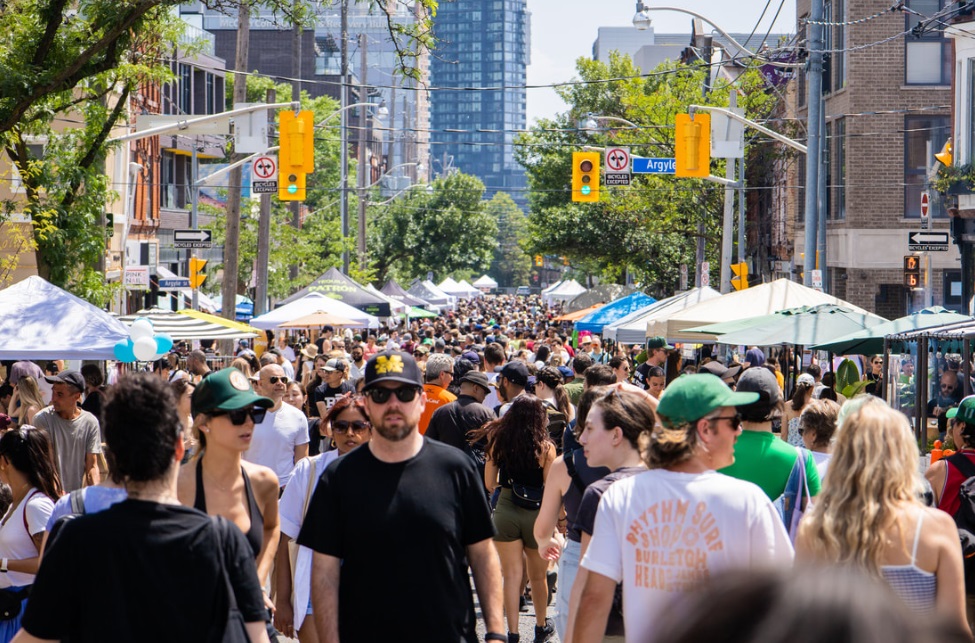Indigenous-led group fighting against elevated portion of Crosstown West near gathering space
Posted January 17, 2023 4:31 pm.
An Indigenous-led coalition is not backing down in its battle against the Crosstown West extension and the decision to use an elevated train rather than building underground infrastructure.
They are planning to protest construction if the Ford government does not meet their demands. The land they are fighting to protect is the massive green space that runs along Eglinton West and is close to an Indigenous gathering space.
The two-acre parcel of land along the Humber River is known as a bush teaching gathering space where Indigenous youth come to heal and practice their culture.
“It’s supposed to be tranquil,” said the ENAGB Indigenous Youth Agency’s leader Cynthia Bell. “This is our Wigwam. We basically have programming here, and we often use it as a moon launch.”
While Metrolinx says it will not intrude on the ENAGB land parcel, the area would be an earshot from the elevated guideway with trains constantly running back and forth.
Bell told CityNews if the Ford government fails to bury the line, all of this is in jeopardy.
When asked how far they are willing to take their fight, Bell said, “Let’s just say we are going to be practicing our rights to protect the land, and if that means stopping construction, we’ll have to.”
RELATED: Scarborough subway extension project tunnelling begins
Tunnelling has already begun along Eglinton West, with most of the 9.2 km long extension going underground. Only the stretch between Scarlett Road and Jane Street will be elevated.
Nieland Brissenden, with the group, Stop the Trains in Our Parks, has joined the community coalition to protect the land. He said the current plans will clear-cut urban forest and destroy what he calls a wildlife highway.
“These trees stretch a kilometre and a half, so metres wide [of forest] is going to be gone,” said Brissenden.
Metrolinx tells CityNews that elevating the LRT here is the best option, despite an environmental study that found it would be damaging to vegetation and wildlife.
“Direct encroachment within these natural heritage features may impact vegetation and vegetation communities, and wildlife and wildlife habitat, through vegetation clearing and the placement of structural elements within natural heritage features resulting in temporary and permanent habitat loss,” read the report.
It continued to say that during operations, train traffic associated with the elevated alignment will result in noise, which may affect and possibly displace wildlife.
The transit agency said they’d have to dig nine stories below the Humber River to build underground, depths they have gone to before, but flooding would be an issue here.
RELATED: TTC staff recommend converting part of Line 3 Scarborough RT into busway after closure
“The higher risk of flooding around the Humber River poses unique challenges to building underground infrastructure in the area. The potential for flooding also poses operational risks for underground stations and tunnels once the line is running and could impact the reliability of the service,” read a letter to the community.
Metrolinx also said elevating the tracks would cut down on construction time and ultimately move more people faster.
“We have incorporated feedback from the community, including changing the location of the access road and limiting tree removals on the south side of Eglinton Avenue West,” Metrolinx told CityNews in a statement.
“All of our Freedom of Information requests have been denied, and we are looking at hundreds and hundreds of trees being removed in the next two months and an arborist report hasn’t been made available to the community,” said Brissenden.
Metrolinx added they have an agreement with Toronto and Region Conservation Authority to plant additional trees near the route, including the advance planting of 400 trees. More are scheduled for later this year.
The City of Toronto confirmed to CityNews they are currently reviewing Metrolinx applications for tree removal in Pearen and Fergy Brown parks, one of the first steps before construction is slated to begin.
An exact timeline is still unknown.
“We will be getting enough people to support whatever it may be, a day of practicing our rights, a month, or six months, whatever it takes,” shared Bell.








